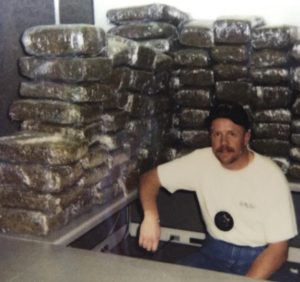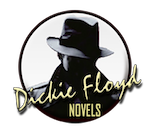
It was a rare occasion when Floyd would drive. Somehow, it always seemed to be my turn, or so he would argue. Fine. But one afternoon we were traveling through Compton, en route back to Century Station, and Floyd was actually behind the wheel for a change.
Crime Impact Team – Century Station

We were detectives assigned to the crime impact team. Our vehicles consisted of unmarked sedans or undercover cars, and we wore jeans and casual attire, sometimes raid jackets.
I can’t recall now what we were doing in Compton at the time, but we seemed to find ourselves there often. We loved Compton.
Nonetheless, we were meandering back to Century Station and arguing about who-knows-what, when I noticed that Floyd had become more focused on the vehicle ahead of us, than on the topic du jour. It was a late-seventies Oldsmobile Cutlass—the preferred hoops of South Los Angeles gang members—and the occupant happened to exhibit certain characteristics consistent with being so affiliated.
He watched us closely in his mirrors through black plastic sunglasses.
Profiling: Not Just a Dirty Word
The citizen motorist made a couple of turns, and my partner followed. It seemed that the longer we followed him, the faster he would go. It is the opposite of how most motorists react to seeing the cops behind them.
“Are we in pursuit?”
Floyd glanced over. “It sort of seems like it.”
This was spoken as casually as a morning chat at the coffee pot. But then the motorist-in-question ramped it up. He turned hard to the left, jumped a curb, and cut across a dirt parking lot. Gravel flew and a cloud of dirt rose as the anxious motorist headed south, back into the Hub City.
In Pursuit
“Okay, I’m pretty sure we’re in pursuit now,” I said, as Floyd bounced us over a curb, across the dirt lot, and off another curb. Our tires squealed and our sedan fishtailed when we reconnected with the pavement.
He glanced over. “It does seem to be the case. Should we put something out?”
On the radio, he meant. Should we tell dispatch that we were now doing about seventy on Rosecrans in afternoon traffic?
It was against department policy to be in a pursuit while driving an unmarked car. That was one problem. Another was that the watch commander would require a solid answer to the standard question: “What is the reason for the pursuit?”
That was a question for which we had no answer.
A Little White Lie
“Eight-twenty-one Paul, we’re following a failure to yield,” I started. Then I provided our direction of travel, the vehicle description and its license plate number, the number of occupants—which was one—and the reason we were “following a failure to yield.”
I unkeyed the mic and asked about that. “Did you figure out why we’re chasing this guy?”
We came around a corner with the tires squealing again. Floyd waited until we had straightened out to say, “He’s a fleeing felon, at this point.”
That wasn’t going to work.
“Eight-oh-one Paul, the reason for the purs—uh, for following the failure to yield, is, uh, he’s a possible two-eleven suspect.”
Floyd glanced over and grinned.
The radio crackled with activity, various units acknowledging our request for backup and providing their locations and estimated times of arrival. We continued following at a high rate of speed. Our siren wailed and a red light sat flashing from the dash.
We stayed with him until the moment it all came to a sudden stop.
The Way They Always End
Metal crunched as the suspect clipped a vehicle traveling in the opposite direction. He had swerved into oncoming traffic to avoid being stuck behind cars stopped for a red light. When he collided with the other vehicle, the suspect’s car veered left and center-punched a light pole.
Steam burst from beneath the crunched metal that was the vehicle’s front end, while two assholes simultaneously jumped from their vehicles and began running. One was the suspect; the other, my partner.
Foot Pursuit
I had asked many times that he not do that. Floyd was fast; I was definitely not. Normally, he would jump and run from the passenger’s seat and I could drive ahead or go around the block to cut the runner off. It was teamwork. But when he drove and ran, it left me in a bit of a quandary.
I alerted the troops via a radio broadcast that our suspect had crashed at the intersection of Y and Z, and that my partner was now in a foot pursuit. By the time I exited the car, neither my partner nor the suspect could be seen. I quickly analyzed their probable route by noting the direction that gawkers stared. I finished the transmission: “They were last seen running north into an apartment complex.”
I assumed the driving role and went around the block, looking through the apartments and adjacent homes, hoping to catch a glimpse of my partner or the suspect. While doing so, the thought occurred to me that this is why I should always drive.
No luck. I guessed at the direction they might have taken after running through the apartments, and I proceeded to the next block.
I exited my car with the intent of going into the complex on foot to find my partner.
Seemed Easy
Just as I had exited my vehicle, I heard someone huffing on the other side of a nearby block wall. As I drew my gun, the suspect climbed over the wall and dropped onto the lawn just feet from where I stood.
I yelled, “Police, freeze,” or something to that effect, some type of magical police shit that seldom worked. Yet this time, it had. The suspect hit the ground spread eagle. I knew my partner would not be far behind, so I waited to place him in cuffs.
Floyd came over the wall a moment later, sweating and short of breath.
I asked where he had been and why was he screwing around when there were bad guys to be caught. His words, though somewhat unintelligible through labored breathing, sounded like he said he loved me. I could be wrong about that though.
As much as I appreciated Floyd’s adoration, we now had a fish to clean and fry, and we did. It turned out the driver was, to no cop’s surprise, a wanted felon.
***
Don’t forget, Door to a Dark Room is now available in paperback and at almost all ebook retailers.
 Dickie Floyd Novels
Dickie Floyd Novels